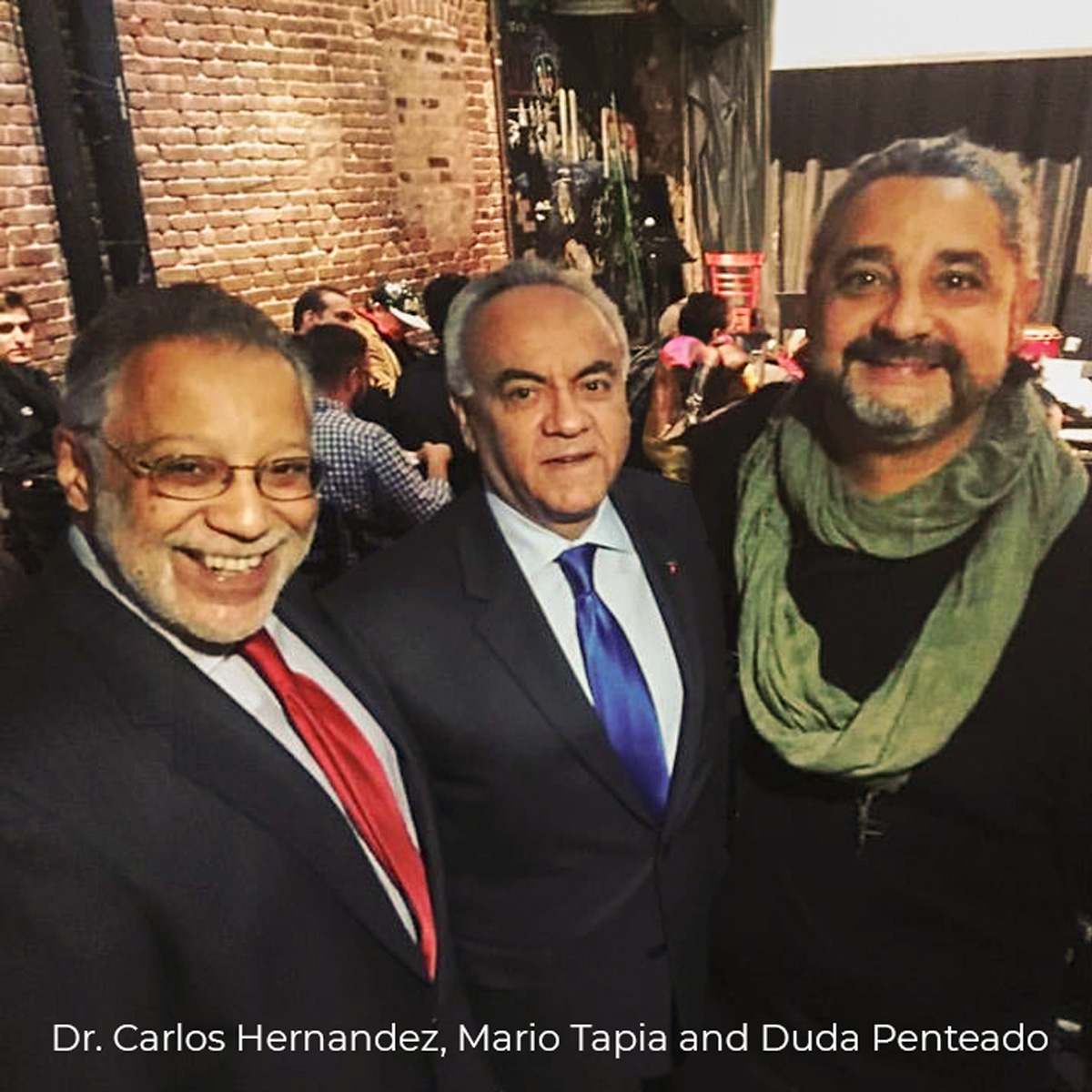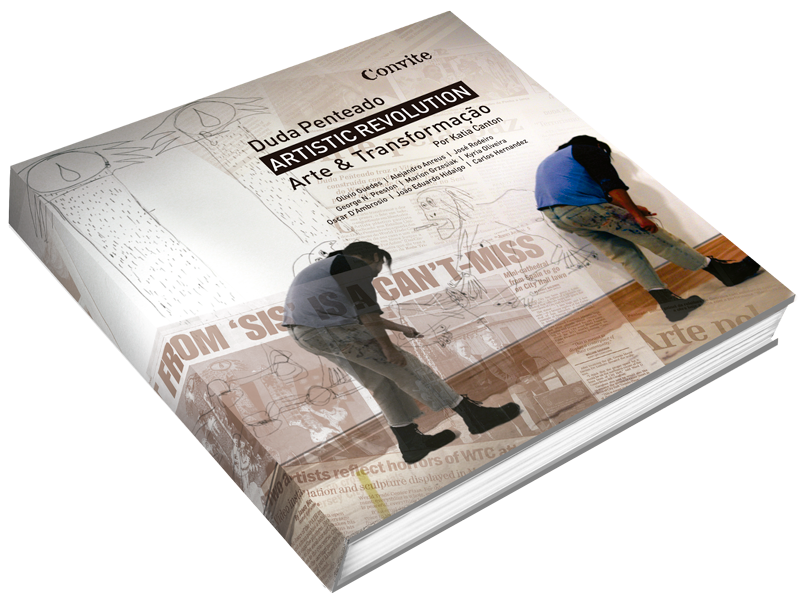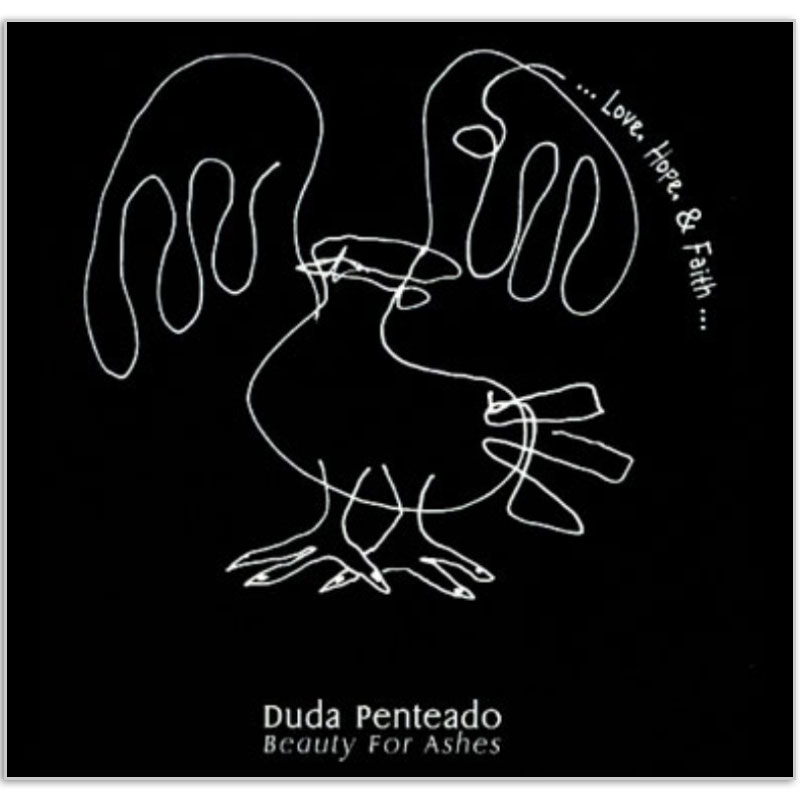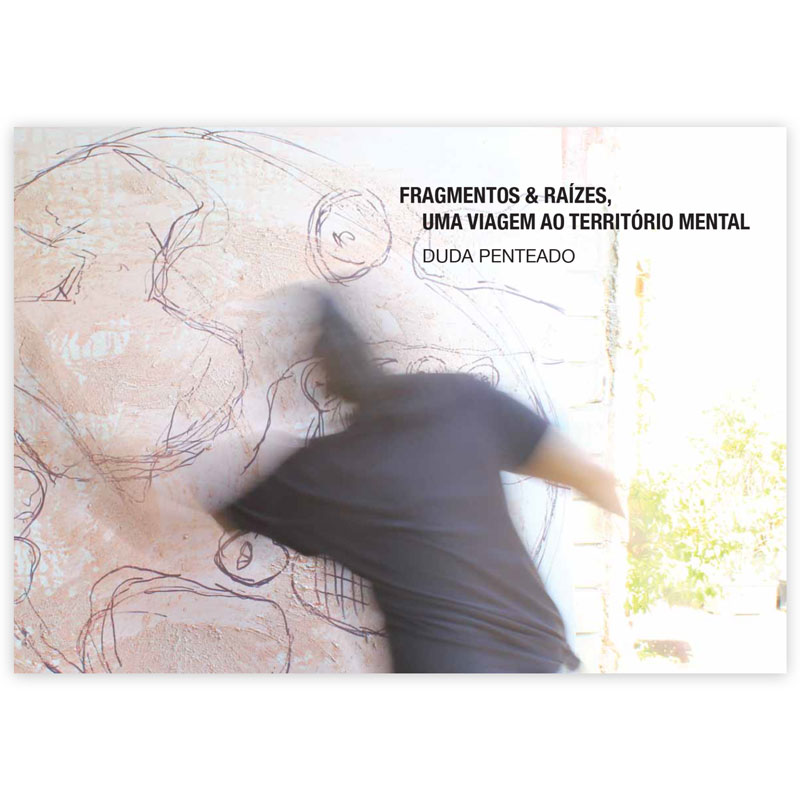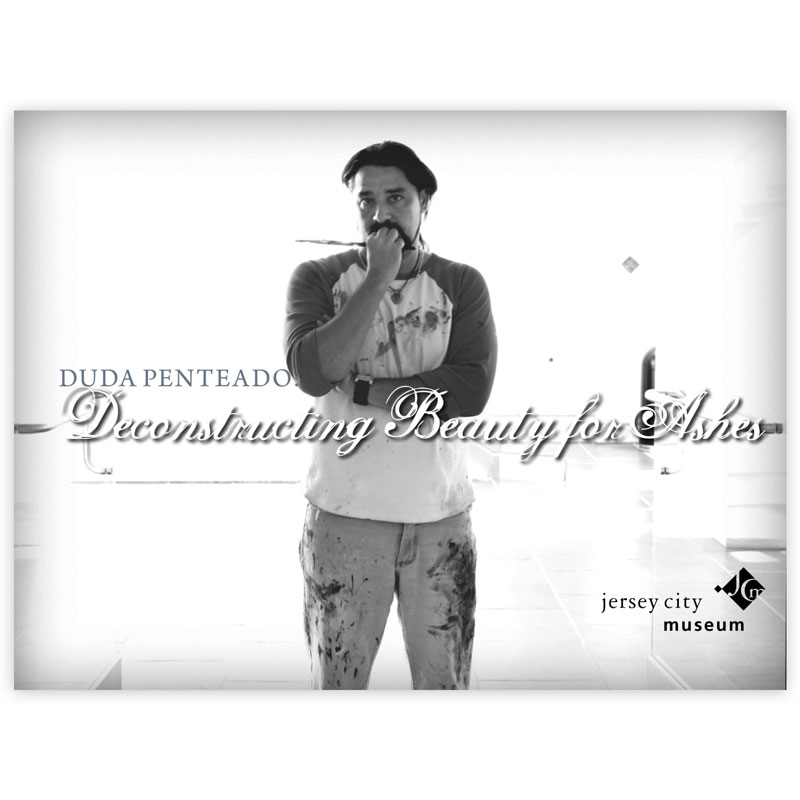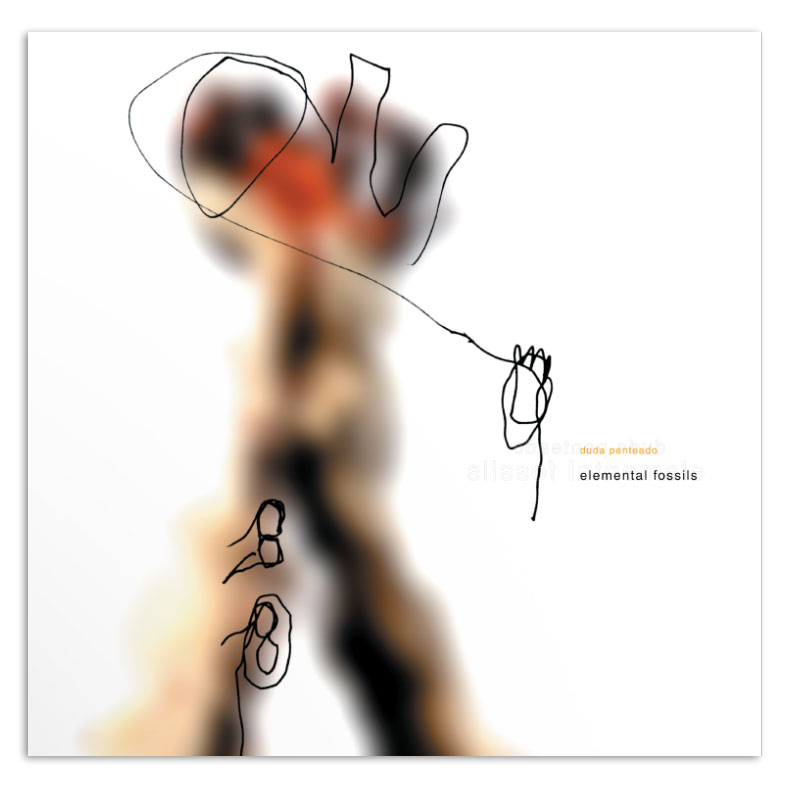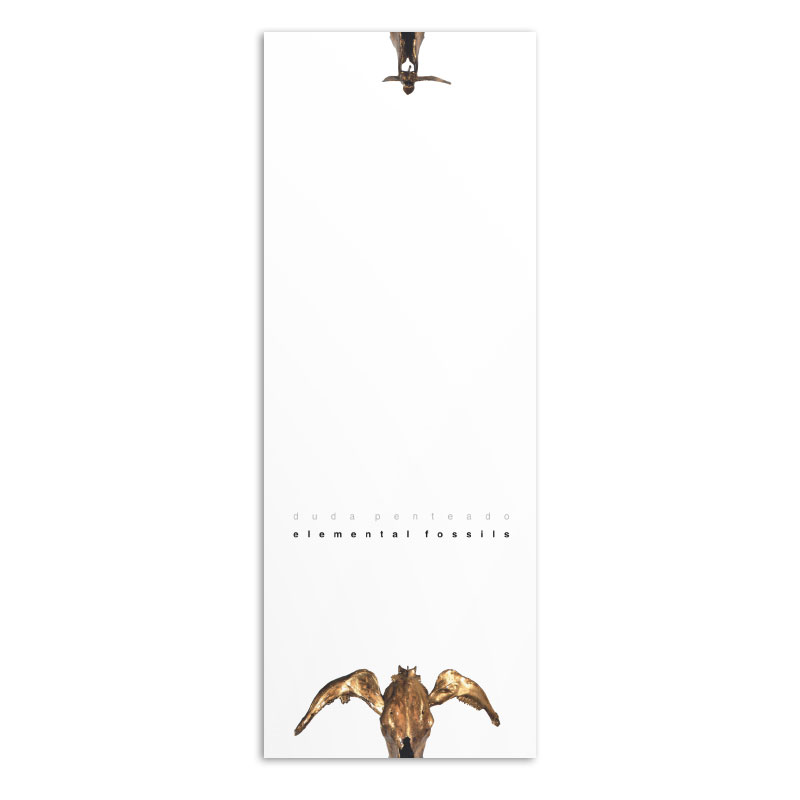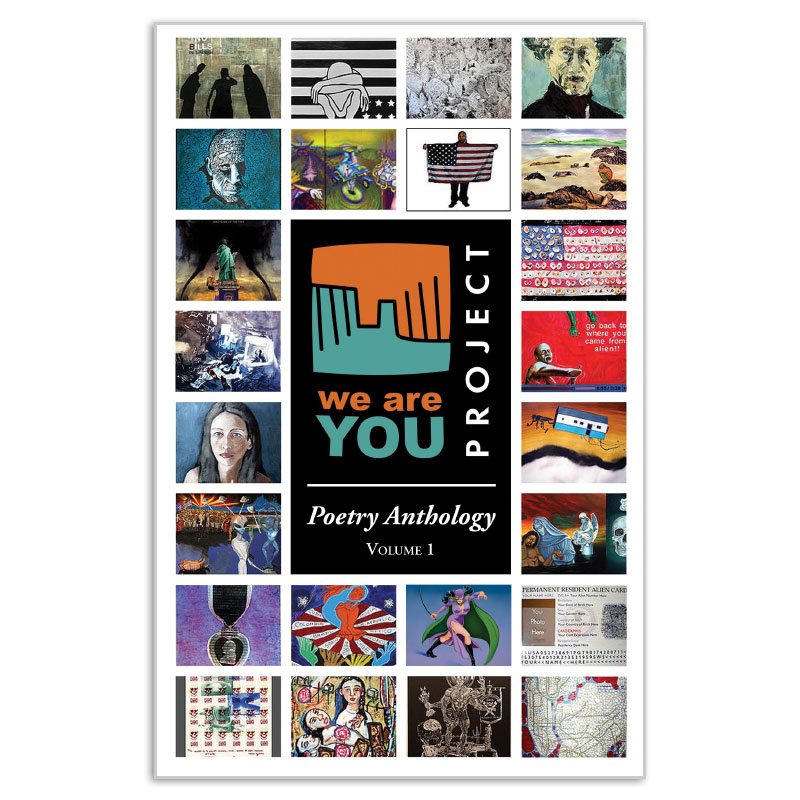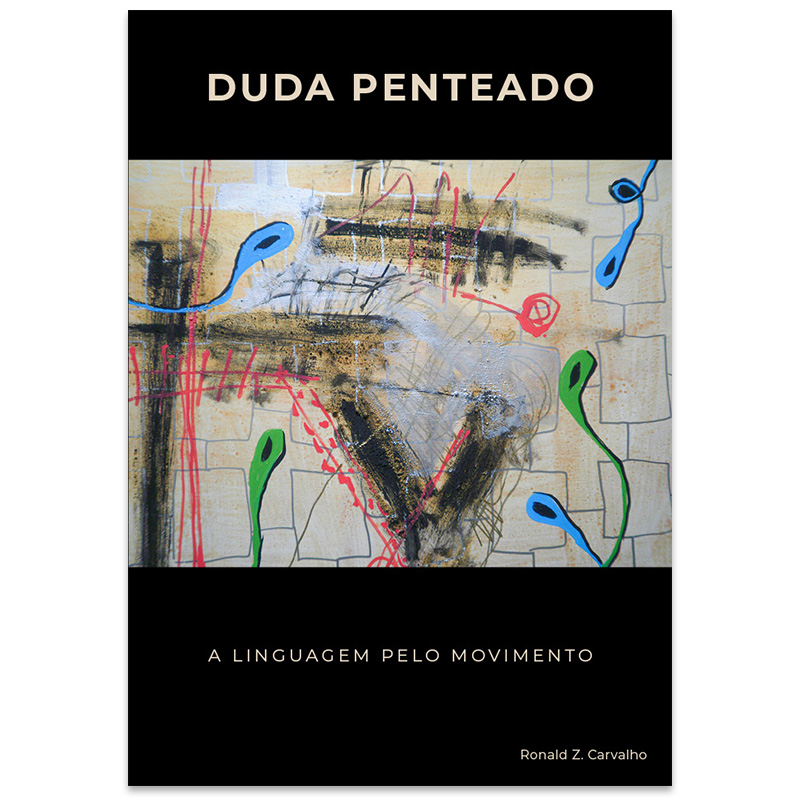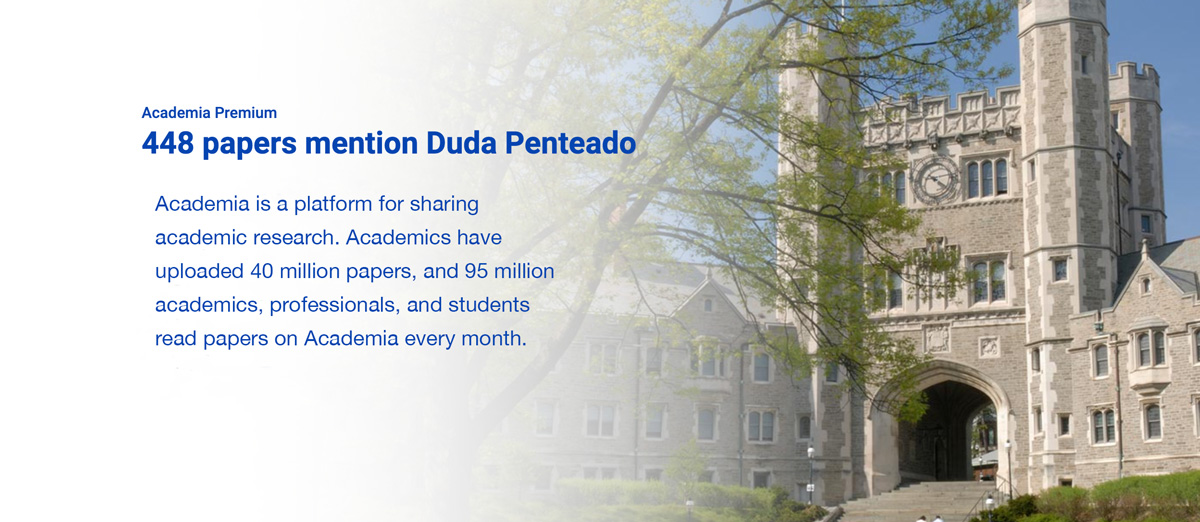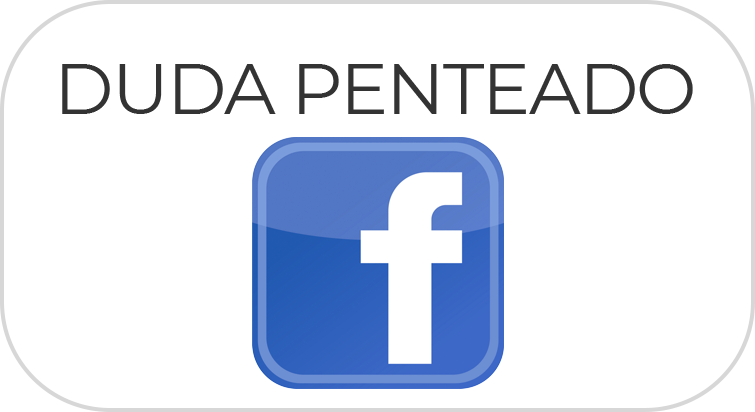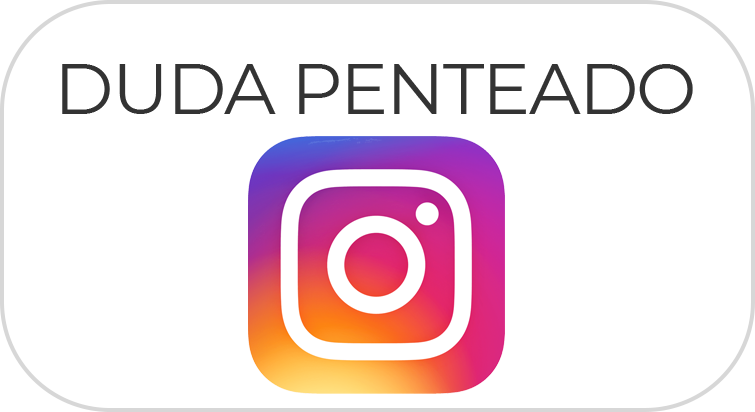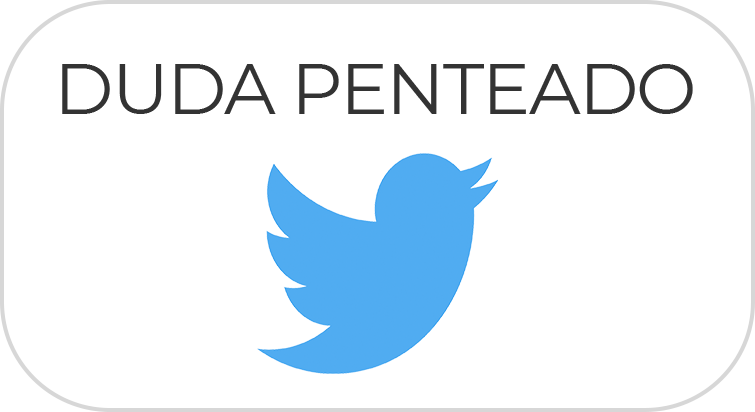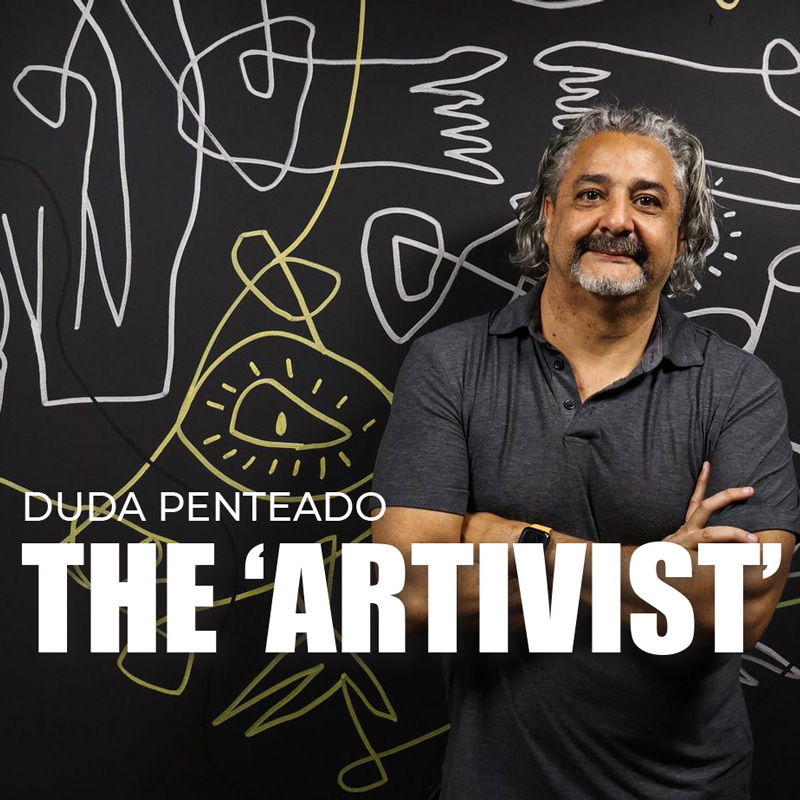
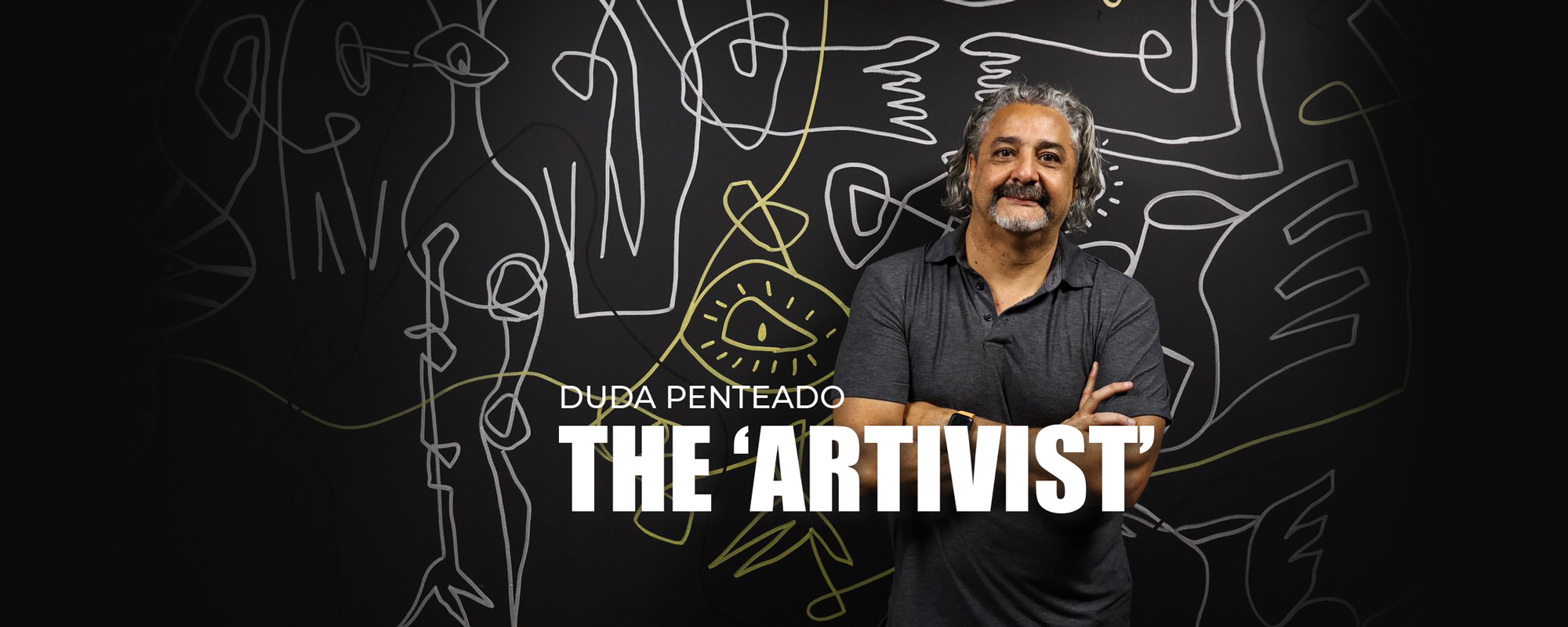
ARTIVIST
“The real challenge is to know when an artist stops quoting someone else and begins to quote himself. Great art comes from within, it is the true language of the soul. To create art is an act of faith in itself.” — Duda Penteado
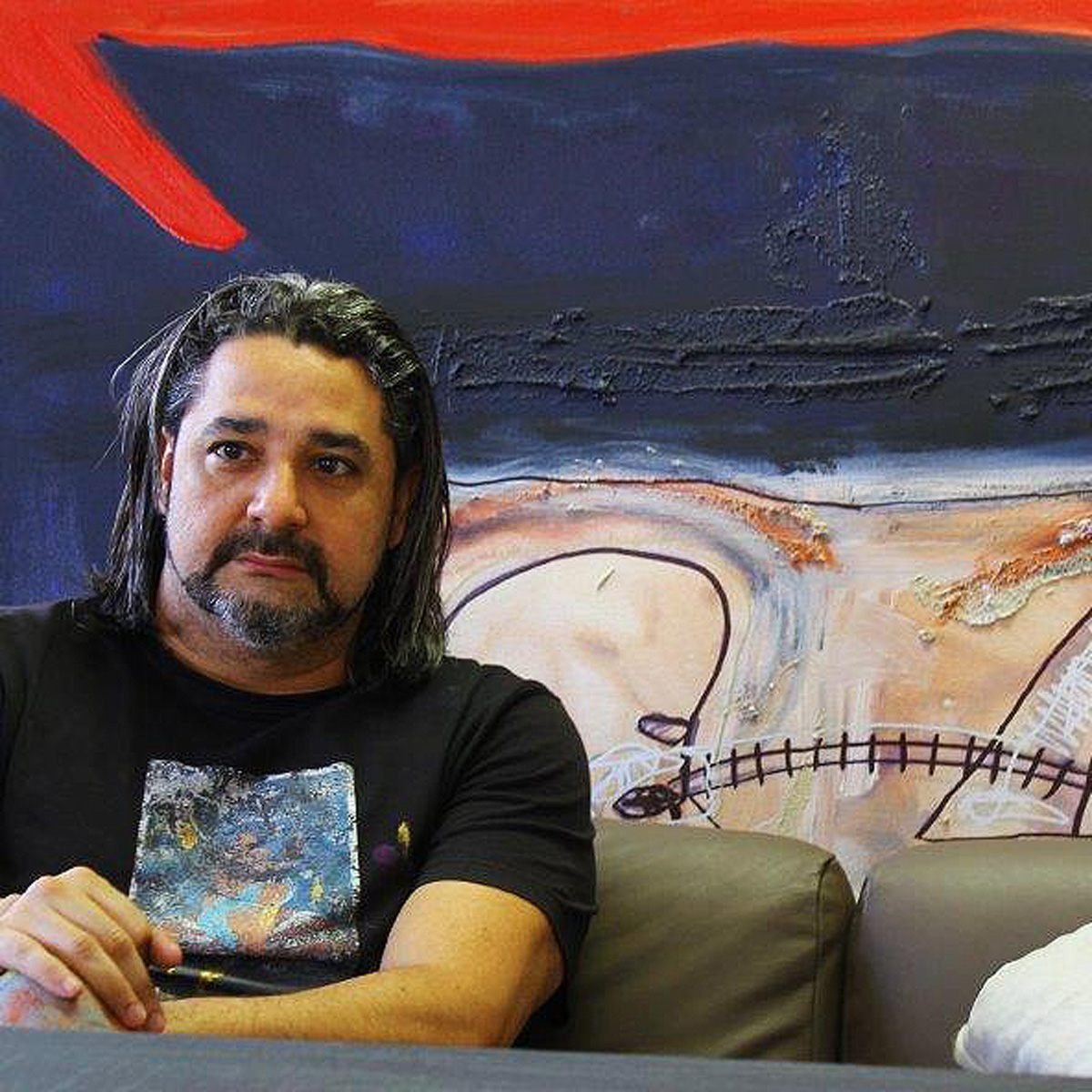
Biography
Duda Penteado is a artivist, filmmaker, educator and cultural visionary, who lives between the United States and Brazil for over 20 years.
ARTIST STATEMENT
The real question for me today is: how can an artist working in the twenty-first century continue to create original works of art after the overwhelming presence of remarkable twentieth century art…
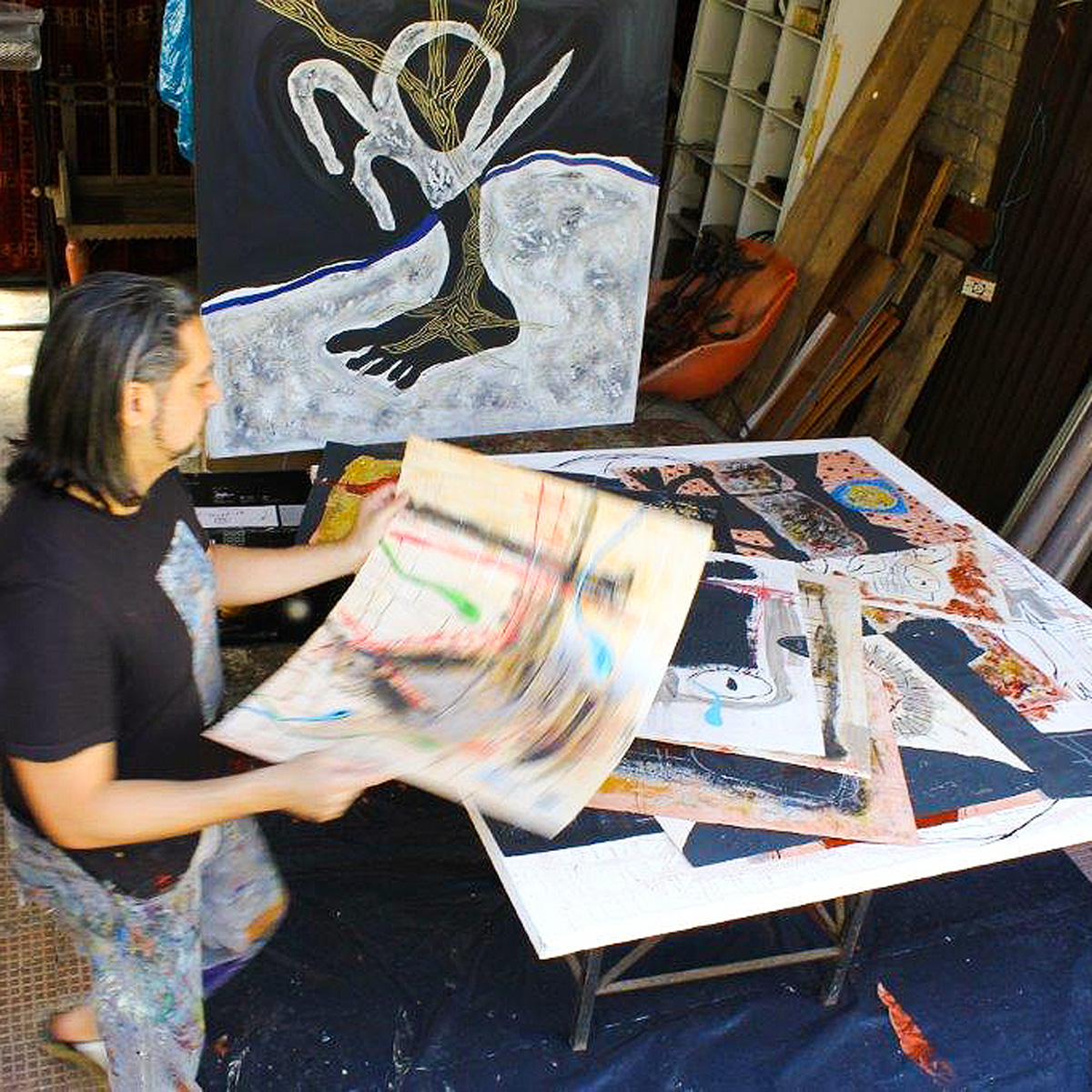
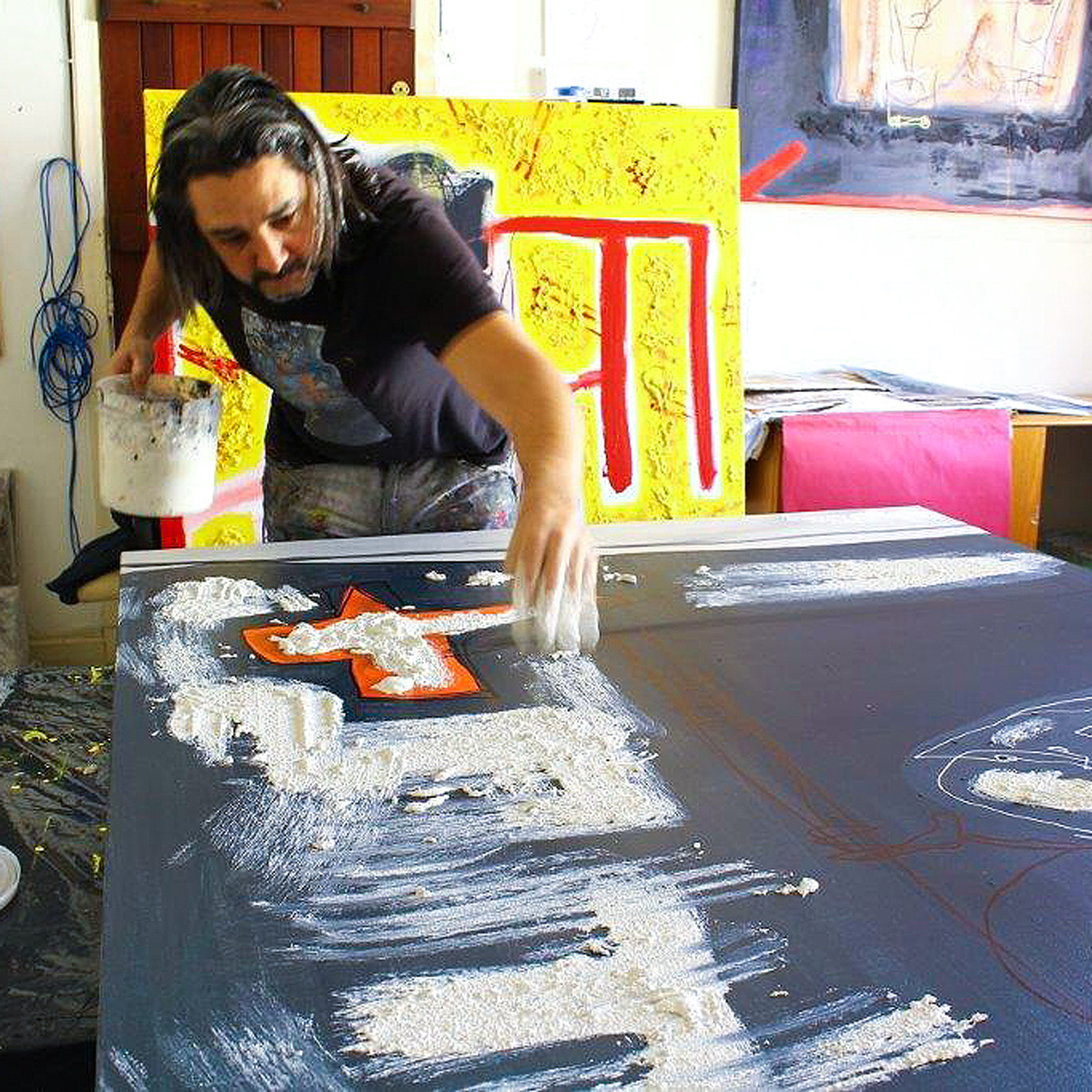
Artist Résumé
An artist’s journey spanning over 20 years, Duda Penteado is known for pushing the boundries of the status-quo to emprove society through the power of the arts.
SELECT EXHIBITIONS & ART PROJECTS
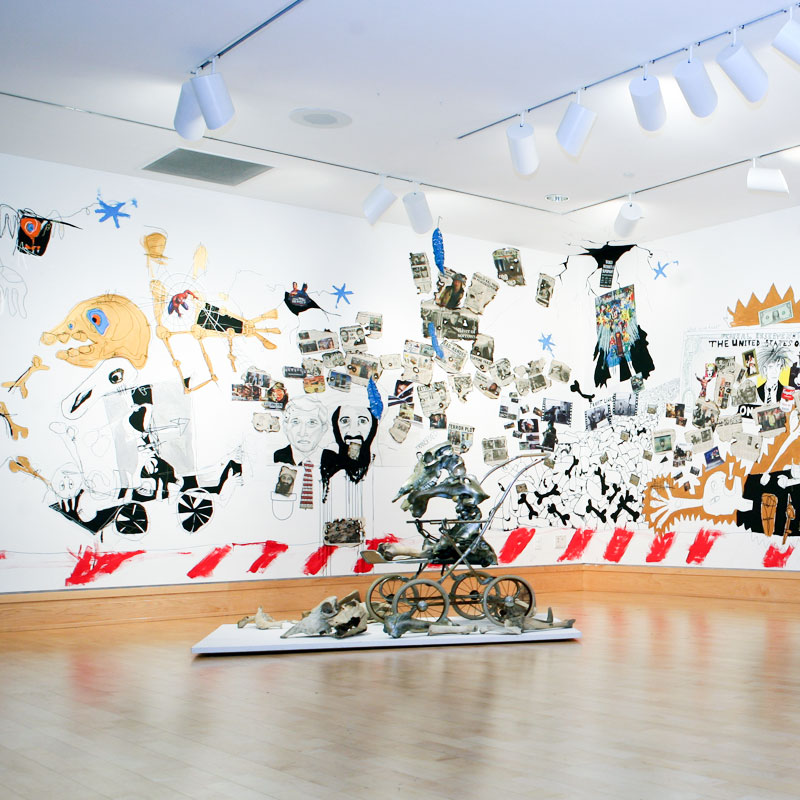
Museums
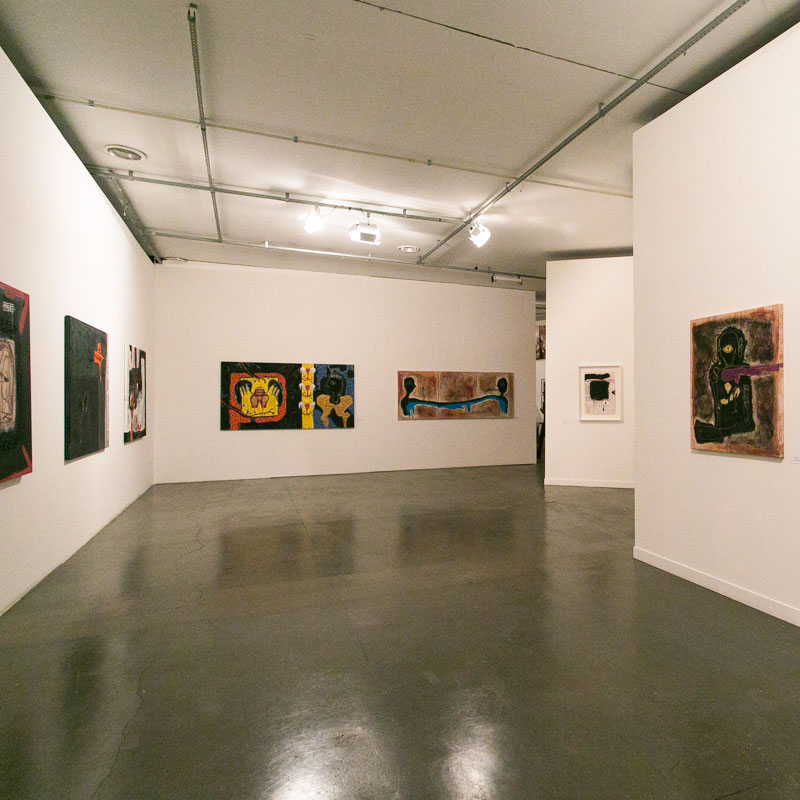
Galleries
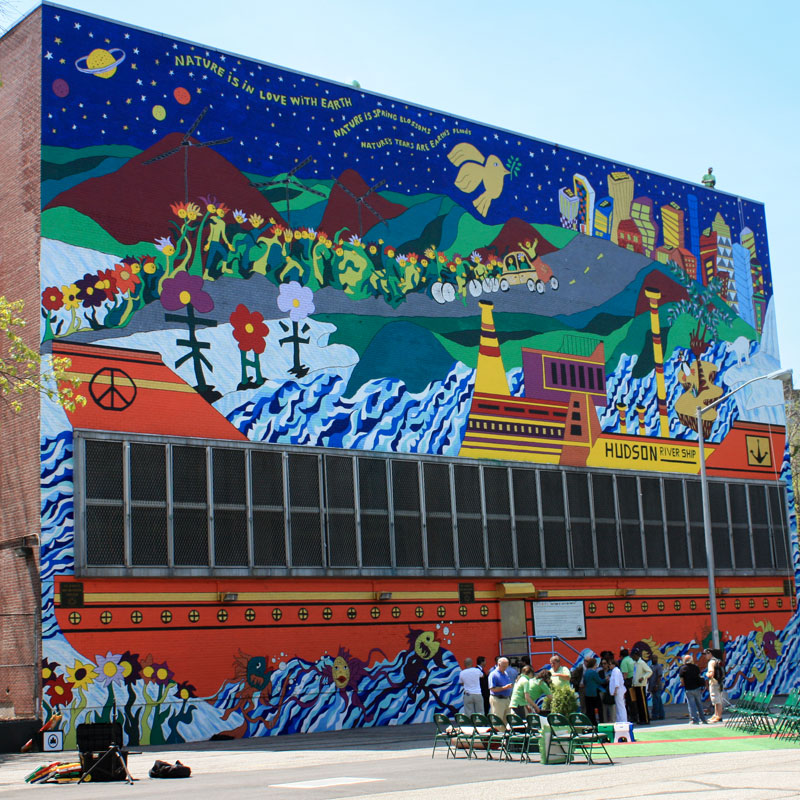
Community Art Projects
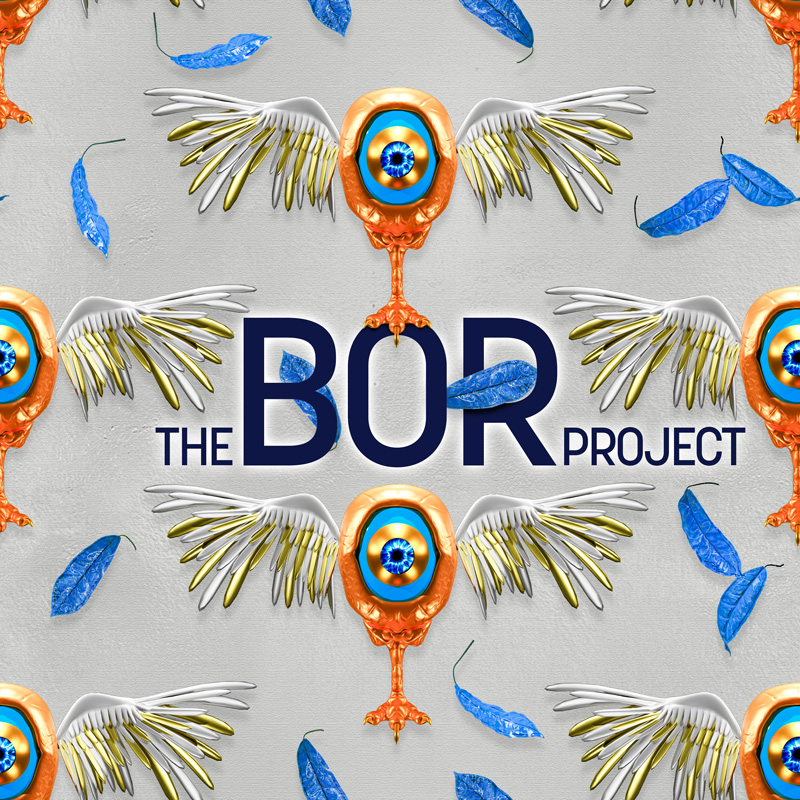
Global Art Initiatives
TRIBAL LINES – LIVE PERFORMANCE
The Amazônia Manifesto ART Installation
“There has never been a more urgent time for creating provocative art, on issues that are so significant for the survival of our contemporary world”
– Duda Penteado, the ARTIVIST
His most recent work entitled ” Tribal Lines” Mural – Art Installation represents Duda’s understanding of this journey, and is based on his research of more than two decades in the Amazon and in the Xingu Indigenous tribes of Brazil.
CLICK TO READ MORE . . .
The project is an immersion in the rescue of human ancestral knowledge, recalling the art of original peoples who painted using only the light of fire in caves. These pieces are a personal iconography; expressing through color, form, increasing depth and dimensionality, a contemporary expression manifested into artistic interventions on murals,vases, hammock, fabrics and countless other possibilities of the bond that links us and the world we inhabit; a world that we have transformed throughout the millennia.
One of the main functions of artivism is exactly to provoke the spectator to reflect, and to create a constant engagement with the artistic process and the art in itself, and not just passively appreciate the work. Gathered in these interventions, the works of Duda Penteado consist of a visual pedagogy of the highest order, impacting the public on essential human concerns.
SÃO PAULO, NEW YORK, THE WORLD OF DUDA PENTEADO! Duda Penteado, a Brazilian-American, is an exuberant, yet insightful artist. Born in São Paulo, the financial heart of Brazil and one of the largest cities on earth, into a family of academics, his relocation to the New York City area was not a difficult transition. There he could easily maintain his Brazilian persona while adding a layer of American.
Because he considers himself both American and Brazilian, the artist is fond of saying that he lives in voluntary exile in America. So, he was shocked to his core, as so many of us were, that his new home country was so viciously attacked by what Osama Bin Laden’ inflicted on New
York City on September 11, 2001! As an artist, he had to confront this brutality in his work, which appears to process the attack on the World Trade Center Towers through an historical lens, one that recalls both the brutal assault by Hitler’s bombers (at the behest of Franco) on the Basque town Guernica that resulted in the destruction of the Spanish town on April 26, 1937, and Pablo Picasso’s response to it. Elements of Picasso’s eponymous Guernica (1937) would permeate Penteados’s own work for a time, especially the scream and the broken horse’s head.
So strong was Picasso’s influence that it took Penteado several years to reconcile the impact of this giant, his masterpiece, and the atrocities that forged their association.
His process is revealed in his public mural production, for which he invited community participation. A more ample vision begins to form as graffiti and other street artists make their contributions both to those events and to his own evolution. Street art begins to shape his social visual perspective, analogous in so many ways to the work of Graffiti Artist Samo, while the philosophy underpinning Joseph Albers’ series Homage to the Square emerges in Penteado’s canvases, directly or by osmosis, as a solution for hanging the subject of his work, which may appear to be either looking into a cave (Crossroads, 2021) or out of it (Footprint, 2021).
The artist’s Brazilian roots are omnipresent. The three major legacies of Brazilian society, the European, the African, and the indigenous communities each play their part. Echoes of Africa
(Afro descendants), Native Brazilian prehistoric rock drawings, the time he has spent living with the native communities of Xingu, Mato Grosso, and Rio Negro, Amazonia, and, of course, his Portuguese ancestry all resonate in his oeuvre.
His work reverberates with the environment of the carnival, its exuberance, colors, and the sounds and freedom of the Samba, a space of extreme happiness where everyone participates, regardless of class, religion or sexual preference, where not only the living participate, but where even the ancestors are present, portrayed in the costumes and paraphernalia, by skulls, dancing skeletons and ghosts! Yet, the artist’s work also reflects the Brazilian legacy of the Bossa Nova in multiple areas, with details offering calm reflection and sophisticated nuances in otherwise gestural work.
I would say that Duda Penteado has found his “Mojo”! In his latest work he channels the metaphoric ancestral legacy of the spirts or souls of Pablo Picasso, Joseph Albers and Jean- Michel Basquiat. In Angels in the Night (2021), an anthropomorphic black image fitted with quasi transparent wings appear to be surrounded by fragments or debris, with echoes or residuals of 9/11. In Crossroads (2021), a mixed media work, Penteado suspends or hangs his subject with a net of graffiti, achieved by multiple continuous lines that linger on the surface of the canvas on which he inserts the graffiti image of his “bird of revelation.” His monumental (8 x 6 feet) canvas, Becoming One (2021), a tour de force of vibrant color, evokes the sound and celebration of the Samba, with nuances of the Bossa Nova reflected throughout, notably in the petals of the flowers.
It has been my great pleasure to witness the steady artistic development of Duda Penteado. His latest works reveal the legacies, environment, and experiences that produce elements akin to musical notes in his opus.
Reynold C. Kerr
Art Critic, Curator, Writer, and Lecturer
ARTWORK BY SERIES
“My art pieces are not an end in and of themselves, but a means of arriving at a fundamental human truth: the struggle of the carnal and the divine in our lives.”
— Duda Penteado
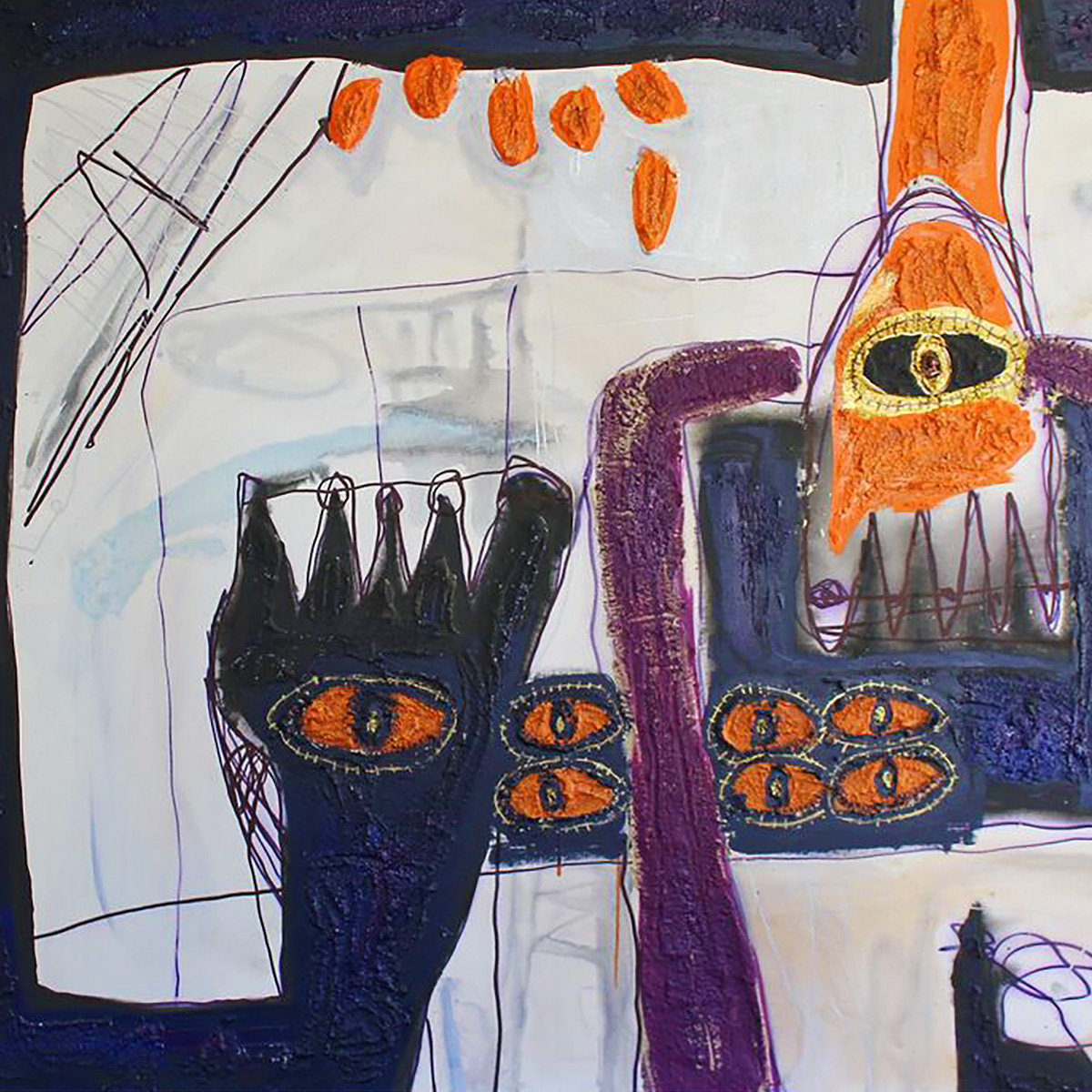
Raízes e Fragmentos
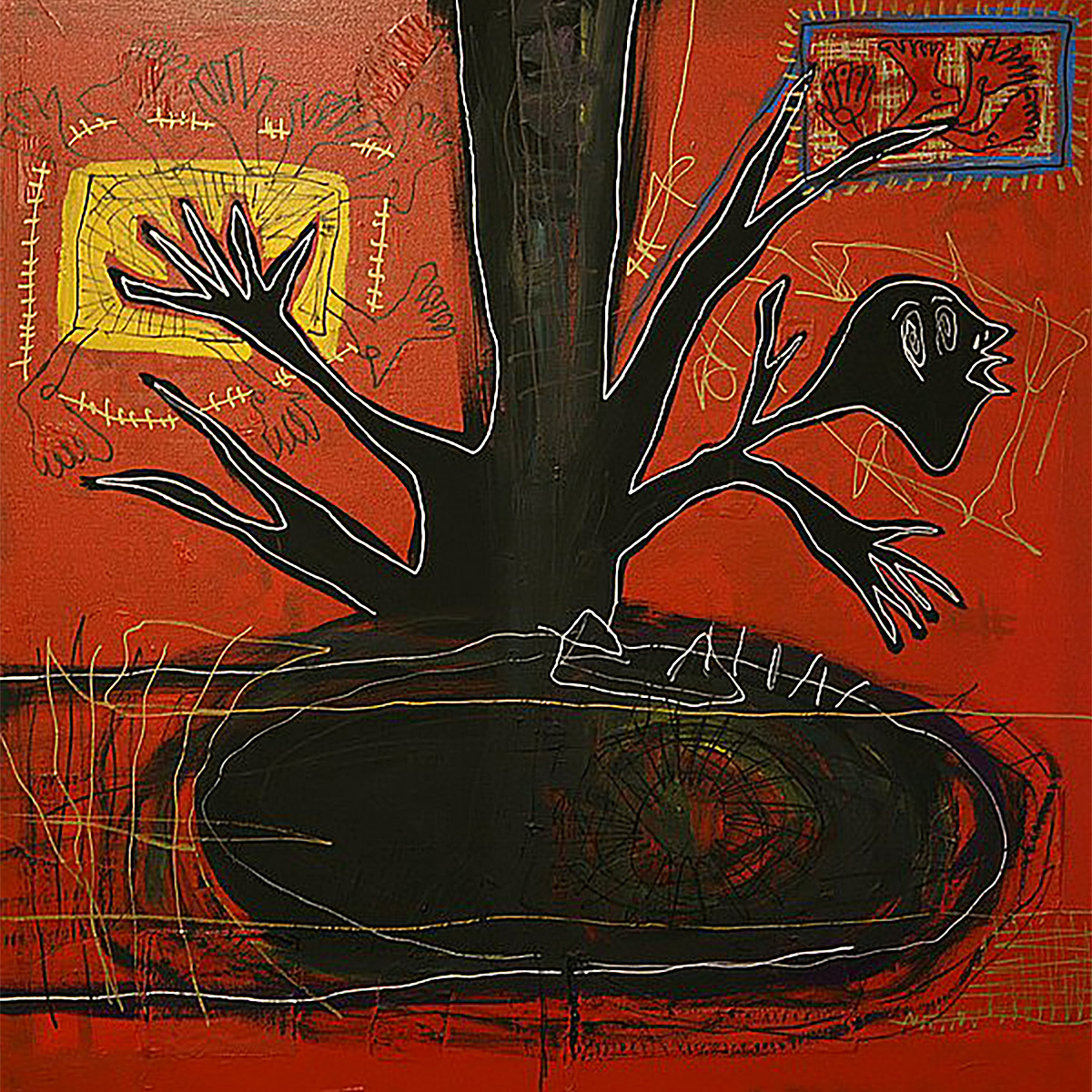
Glocallica
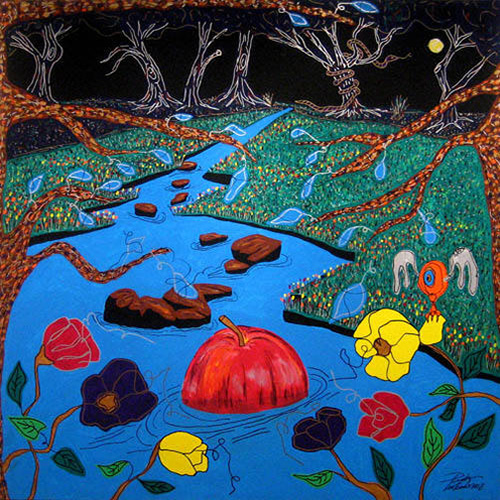
In Search for Paradise
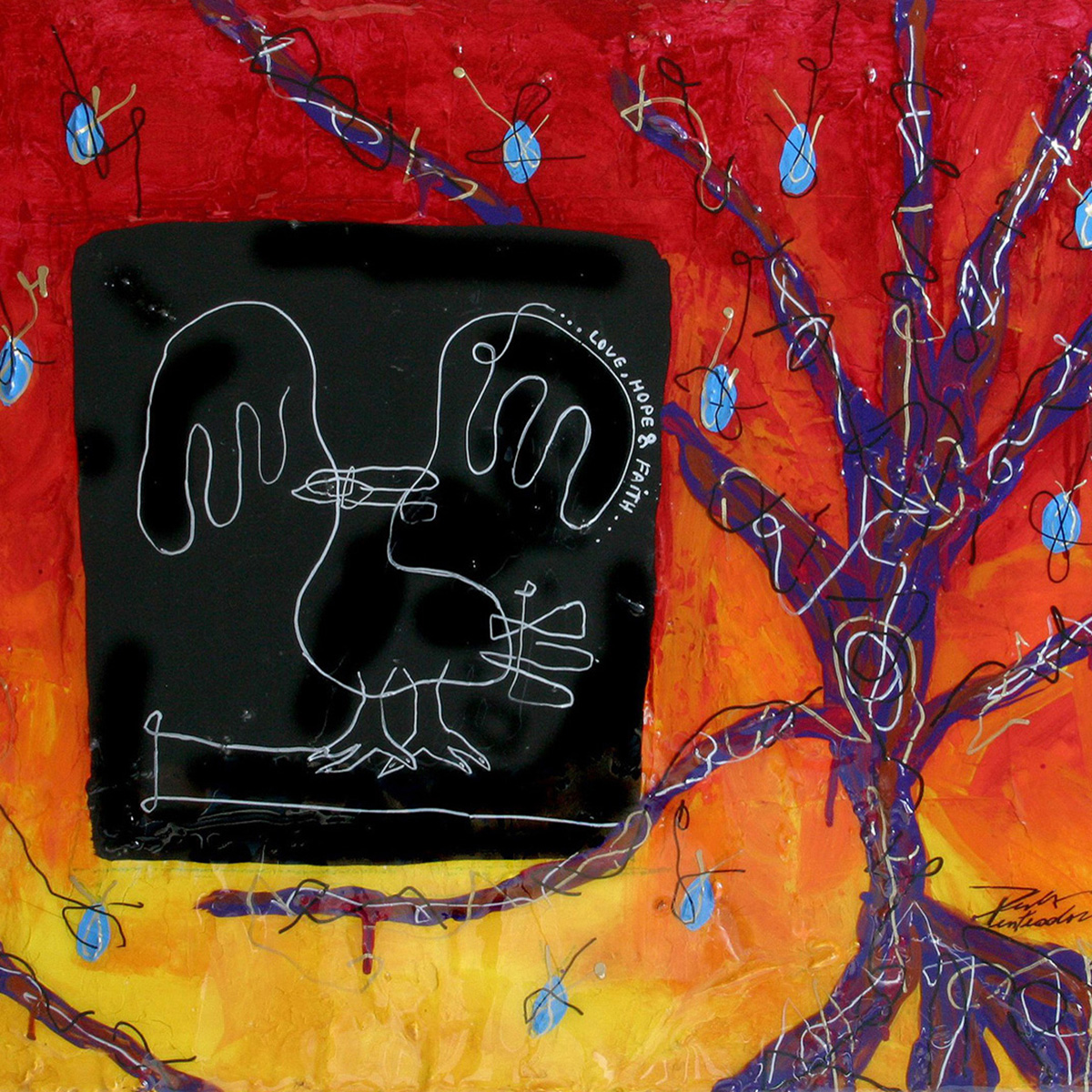
Beauty for Ashes
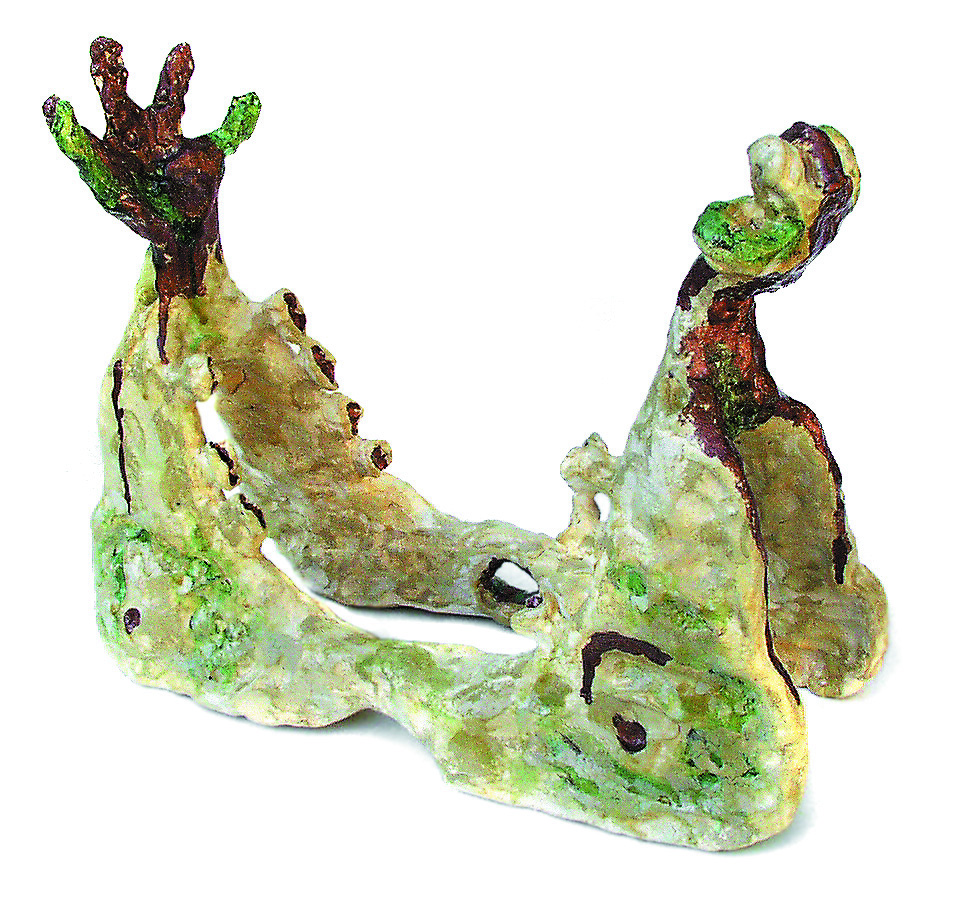
Elemental Fossils II
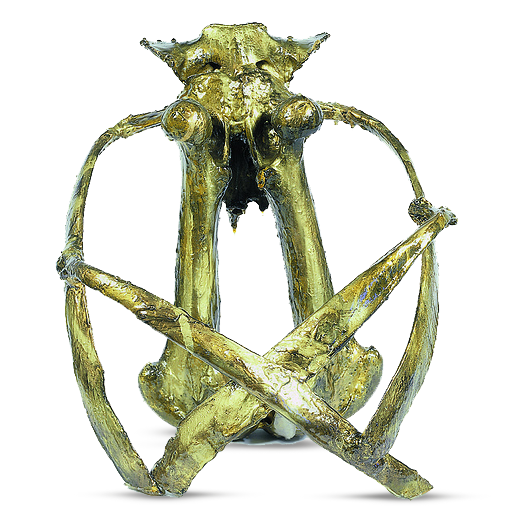
Elemental Fossils I
DPFD is proud to announce the launch of its highly anticipated Shop Online store.
“Beauty, composition and style are fundamental to the expression of our existence”
Based on the work of visionary visual artist Duda Penteado, a selected team of talented individuals came together to create DUDA PENTEADO FASHION & DESIGN, an artistic line of wearable and collectible elements to enhance your life. SHOP NOW
FILMMAKER
“Filmmaking is art. Art is never based on a simple question, but it has the power to make us reflect on several important issues.”
— Duda Penteado
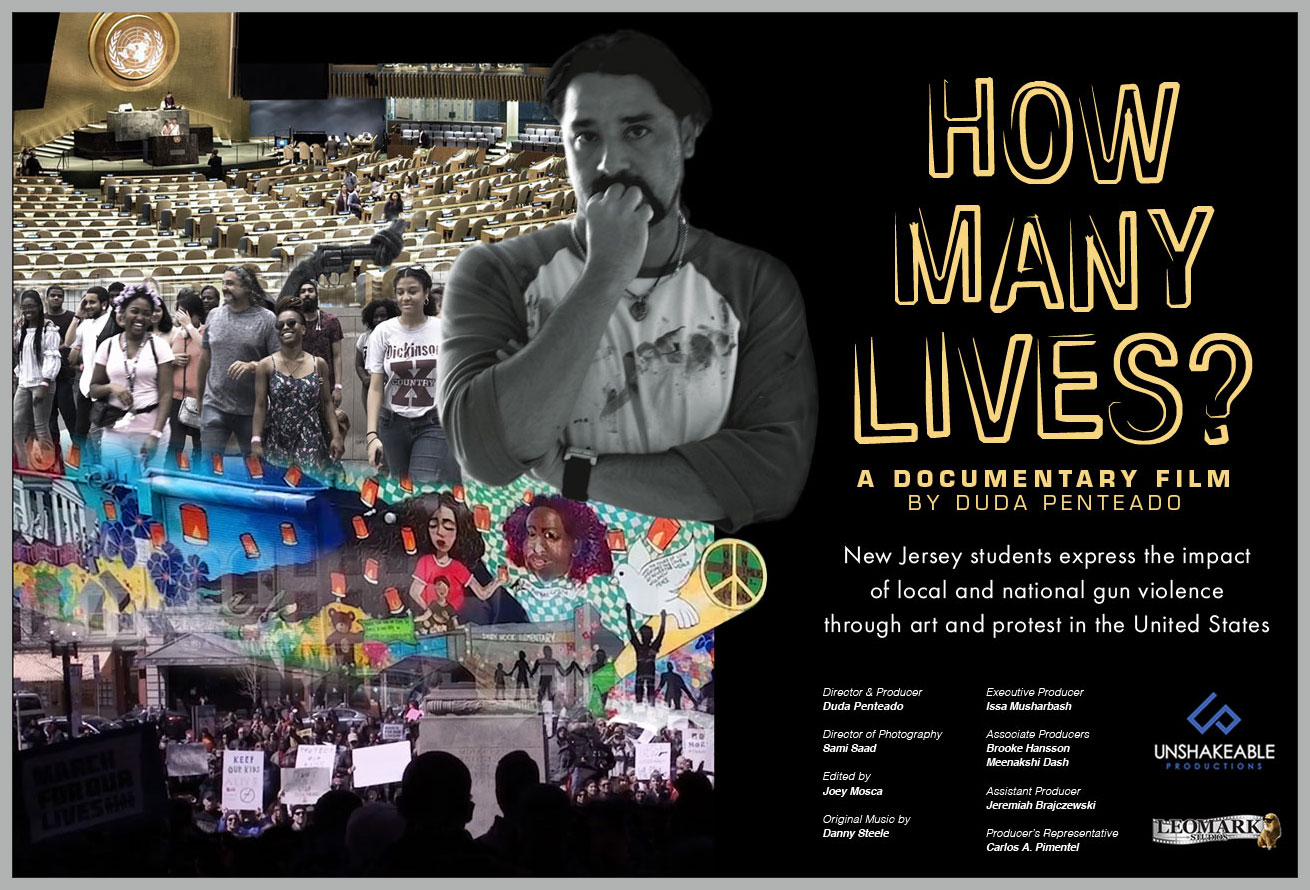
The film documentary, directed by Duda Penteado explores the views and impacts of gun violence through the eyes of 25 young student artists. In creating a 180-foot long mural titled “How Many Lives?” we enter into their innermost world of emotions and thoughts, about the human toll taken by the gun culture that thrives in the United States of America. Winner of the Spirit of NJ Award at the 2018 Golden Door International Film Festival .
Available for purchase from:


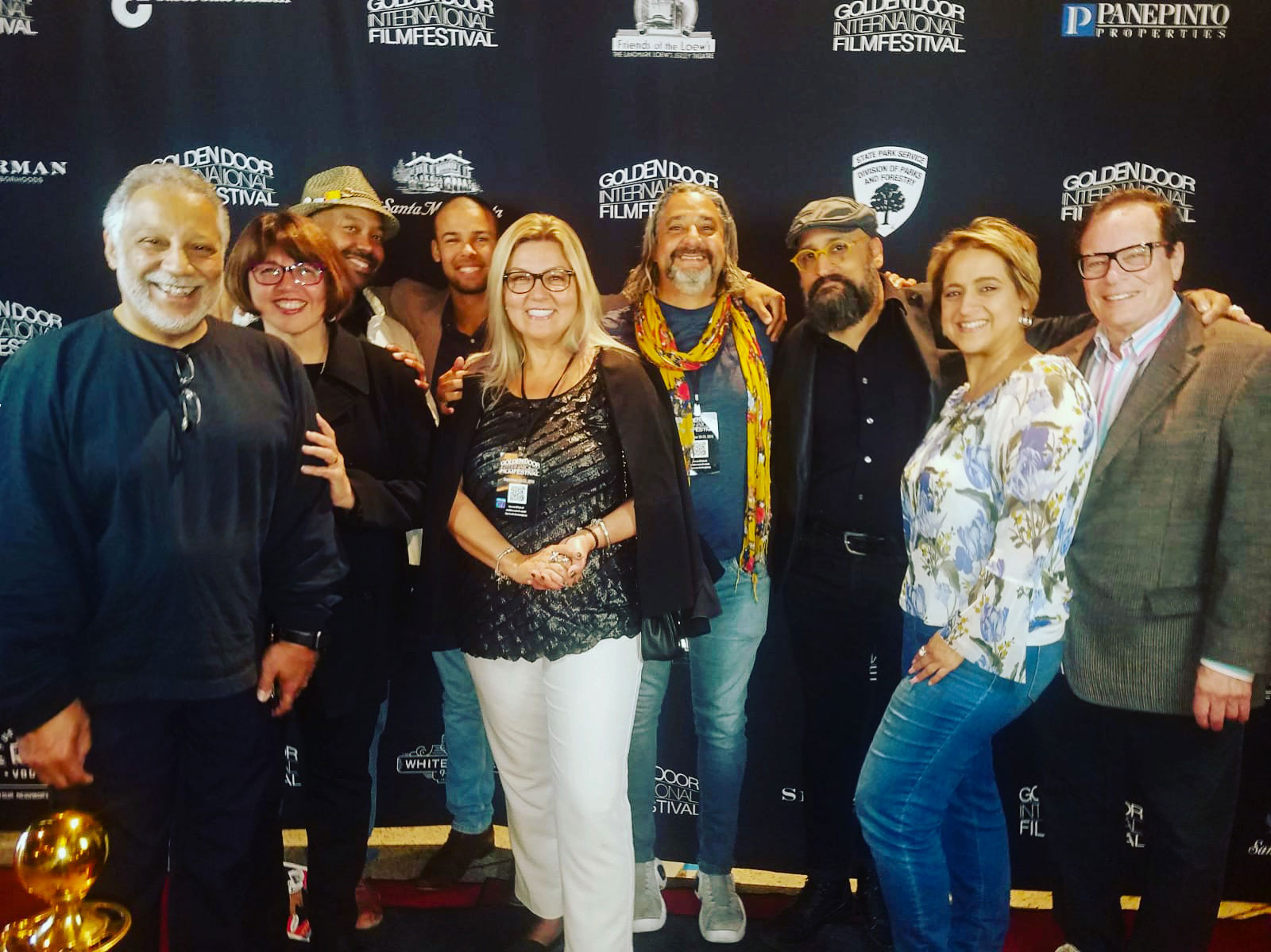
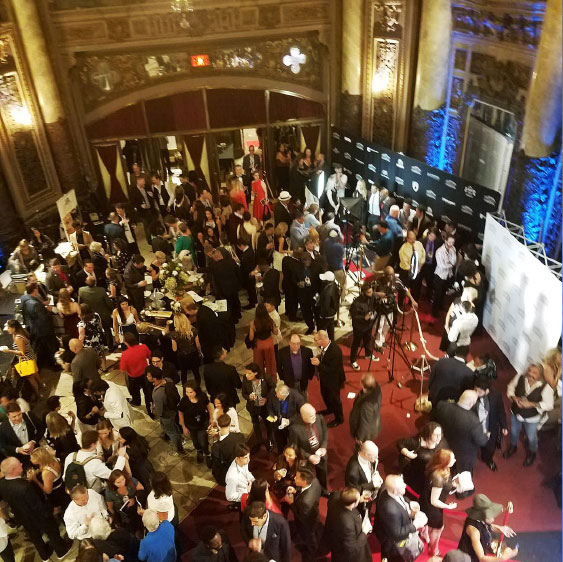
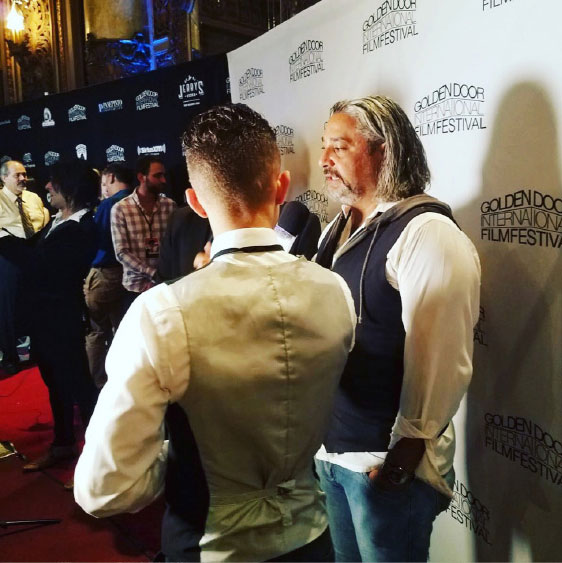
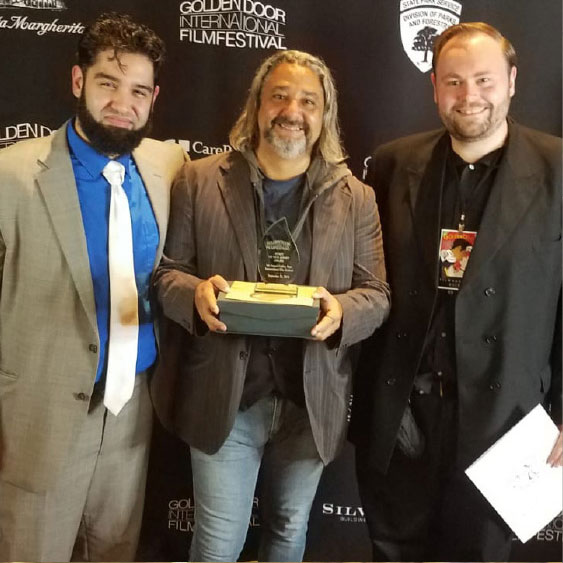
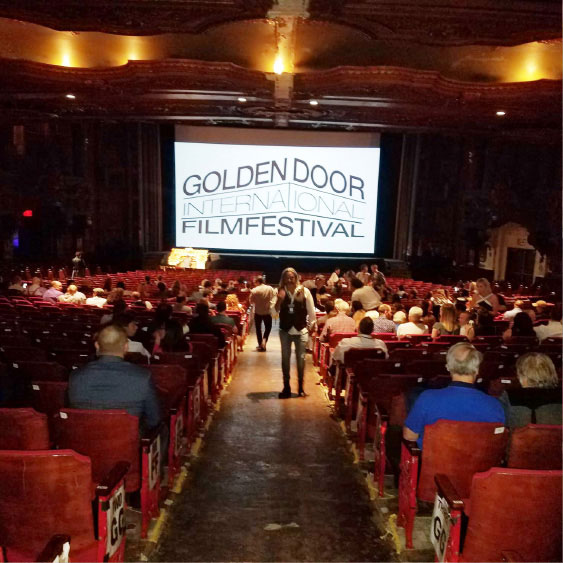
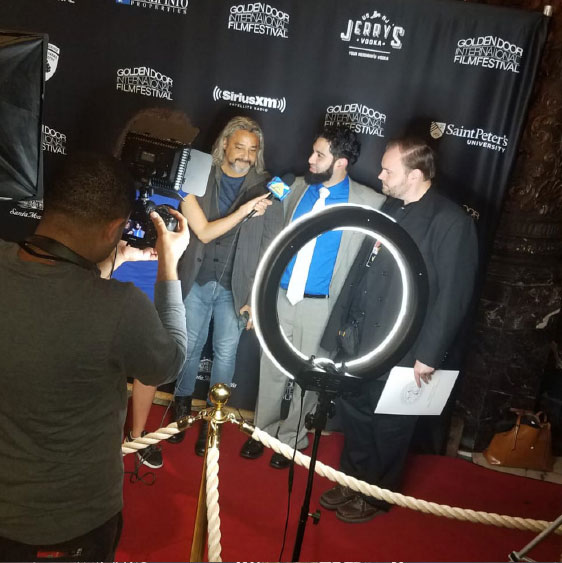
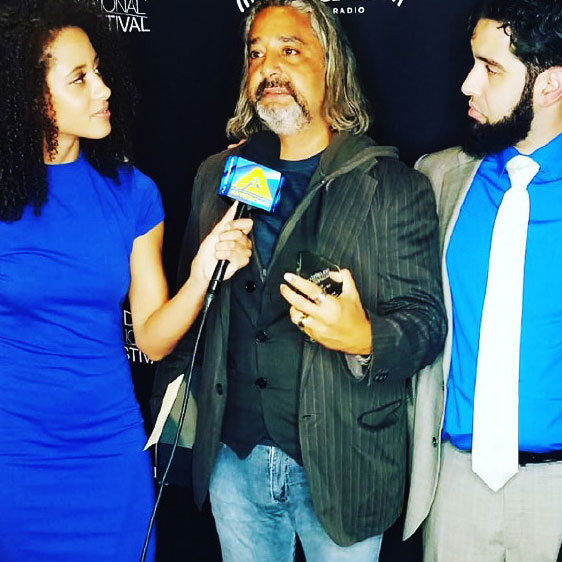
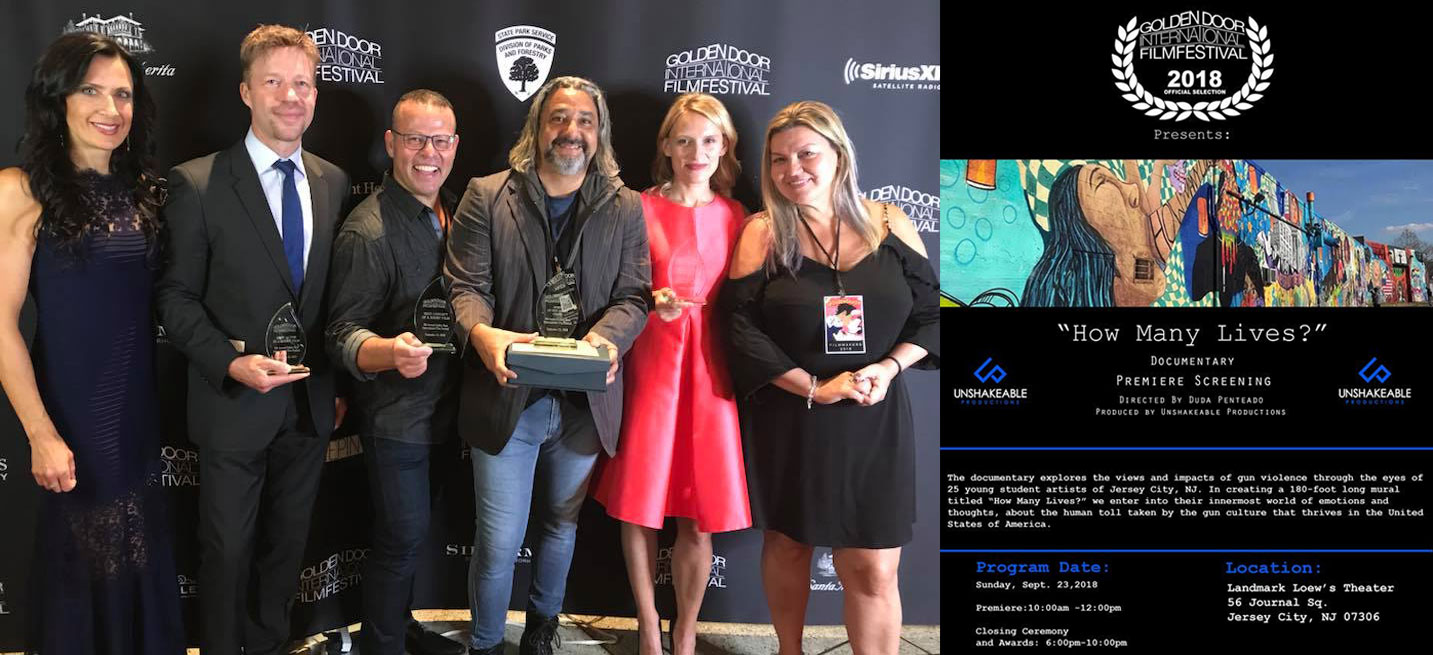
EDUCATOR
“Art can not be empty, because the history of humanity repeats itself and is frightening. It is up to the artist to manifest himself through his work, and bequeath an interpretation of his time, a message.”
— Duda Penteado
The practice of “Artivism”, a term formed by blending the words art and activism, thus implying an artistic practice with political and social content. Duda Penteado, who uses art as a means to bridge creative experiences, is very attentive to these social issues and works constantly to expose them. The goal is not merely to publicize stories of social struggles that are happening throughout our nation and around the world; but his mission is to lead us to reflect and critically analyze the issue in order to be able to act as a community. Art is, then, the vehicle for this social discourse.
The work of Duda Penteado also expresses an aesthetic that responds to the altermodern practice of art introduced in 1990 by the French critic Nicolas Bourriaud, who attempted to contextualize the art of today as a reaction against commercialism and standardization. Bourriaud’s term relational aesthetics refers to the relationship between a work of art and the viewer, its subjects, the environment, technology, and social, political, and cultural connections rather than existing as an independent, private experience.
Accordingly, artistic activity becomes a platform that allows the participation of the observer or spectator, which in this case is focused on a specific community. The selected group of participants, throughout the process of creating a collective work, are also participating in the process of defining its content. They are not mere spectators but creators of the work’s content, and from that communal experience they create an art project of social relevance. The art serves to give them direction and to allow this inter-human experience to generate alternative social systems or critical models for the construction of friendly relationships. In short, the creation of this art project gives space to a joyous, collective experience, that is to say, a relational aesthetic with moral and ethical contents.
“Relational aesthetics” is a term coined by curator Nicolas Bourriaud for the exhibition “Traffic,” held at the CAPC musée d’art contemporain de Bordeaux in 1996. It refers to installations and interactive events designed to facilitate community among participants (both artists and viewers).
Sarabel Santos-Negrón
Multidisciplinary artist, educator and director of Museo de Arte de Bayamón, Puerto Rico
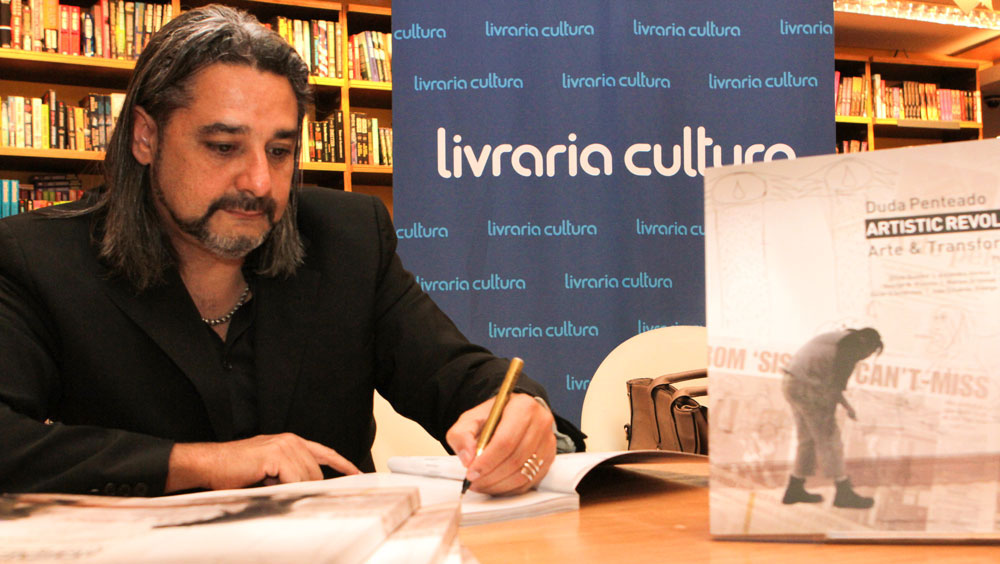
THE BOOK
DUDA PENTEADO – ARTISTIC REVOLUTION, ARTE & TRANSFORMAÇÃO – is more than a retrospective of the last 20 years of his artistic production. Duda focuses its message on the transformative power of art and presents for the first time to the public – among other artistic manifestations – its creative technique called ; ARTISTIC SYMPHONY. This book is the result of over two years of work with the participation of some important art critics and writers between Brazil and the United States as ; Katia Canton, Olivio Guedes, Oscar D. ‘Ambrosio, Joao Eduardo Hidalgo, George N . Preston, Alejandro Anreus, Jose Rodeiro, Carlos Hernandez, among others.
OTHER PUBLICATIONS
CULTURAL VISIONARY
“The only way visionary artists can bring change to our existing cultural reality is by finding relevance through the transformational approach of the creative process. It reveals the power and influence that art and culture have in today’s global society…“
— Duda Penteado
Cultural Visionaries
Shift the Paradigm
At the dawn of the 21st Century, Duda Penteado slowly began to envision a unique Latino global visual-art initiative, reflecting a revolutionary concept that would transform and facilitate new activism, and socio-political renewal, and unification among all Latinos: “Pan-Latino Transculturalism.”
The heroic first steps in this venture began in 1997, when Penteado met Dr. Carlos Hernandez, a prominent New Jersey Latino university president with almost 40 years of service in American higher education.
Then, Penteado met Mr. Mario Tapia (President and CEO, Latino Center on Aging (LCA)), who joined this key initial group of Latino “cultural-visionaries.”
